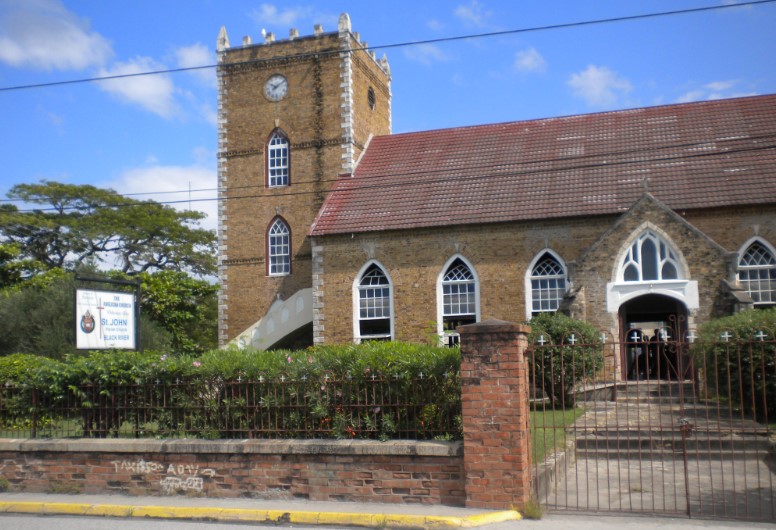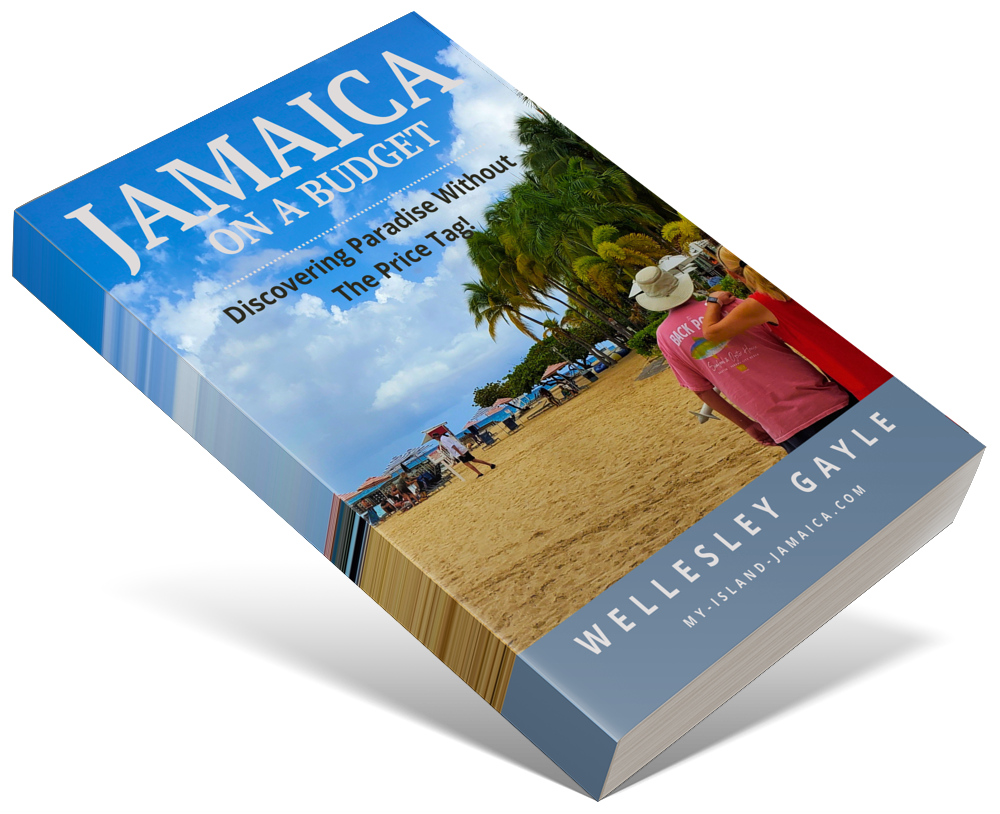Subscribe for all my updates and don't miss a thing! Sign me up!
The History Of St Elizabeth
The Achievements of Jamaica's Breadbasket
Sharing Is Caring! Share this awesome content with your friends now.
 The History of St Elizabeth | St John's Anglican Black River Parish Church -(Photo: Jamaica Heritage Foundation - Wordpress)
The History of St Elizabeth | St John's Anglican Black River Parish Church -(Photo: Jamaica Heritage Foundation - Wordpress)by Venesha Johnson | Associate Writer
Known as the Breadbasket Parish, one of Jamaica's oldest parishes is St. Elizabeth.
New! Take a piece of Jamaica with you💃!
Savour the memories! Now you can get your authentic Jamaican souvenir items, as well as traditional Jamaican herbs, spices and housewares on our popular e-store. Click Here to learn more.
And, if you ever need a trustworthy and knowledgeable local guide, consider booking a private tour with us!
In the southwest corner of Jamaica, St. Elizabeth is surrounded by the parishes of St. James and Trelawny to the north, the Caribbean Sea to the south, the parish of Westmoreland to the west, and Manchester to the east.
The parish is divided into two mountainous regions in the north and northeast, and a vast plain in the centre and south. The Santa Cruz mountain range, which runs through this plain from north to south, ends with a 1,600-foot cliff at its southernmost point.
It formerly encompassed a sizable portion of the island's western region, but in 1703 and 1814, respectively, it was divided to establish portions of Westmoreland and Manchester. Lady Elizabeth Modyford, the wife of Sir Thomas Modyford, the governor of Jamaica from 1664 to 1671, is remembered as the inspiration for the name St. Elizabeth.
According to legend, Tainos were present along Jamaica's southern shore when Columbus first sailed there in the fifteenth century. As of now, Black River and a cave on Pedro Buff both have signs of their presence. Encouraged by the monarchy, the Spaniards quickly took control of the nation, including St. Elizabeth.
The Tainos were later made into slaves by the Spaniards, who also abused them and spread sickness. Many of them perished as a result of the Spaniards' medical care or from the diseases they were exposed to. Later, in the 17th century, the English drove out the Spanish. The defeated Spanish were either slain or fled to neighbouring countries.
The slaves who were unable to escape to Cuba when the Spanish were routed there in 1655, instead made their way to the impenetrable Cockpit Country, which comprised parts of St. Elizabeth. These runaway slaves came to be known as Maroons, and for the descendants of these slaves, Accompong, St. Elizabeth is where they call home.
Additionally, the people in St. Elizabeth were crucial to the success of the 1831 Sam Sharpe Rebellion. About 20 to 40 per cent of the slave population is known to have participated in that insurrection.
St. Elizabeth's main towns are:
Watch Video! The Historical Town Of Black River

- Black River- The capital
- Santa Cruz - The Main Town
- Malvern
- Junction
- Balaclava
The Cockpit Country
The 'cockpit' krsat limestone, which resembles an upside-down egg tray, is what gives the vast region in west-central Jamaica its name. Though centred in the parish of Trelawny, this region, which is about 450 km2, also extends into St. Elizabeth.
The vegetation of Jamaica's Cockpit Country is the largest and most complete example of a wet limestone forest. Its flora is a prime example of the West Indies' exceptional endemism. Additionally, the majority of Jamaica's 550 native ferns are found here.
Important Facts about St. Elizabeth
Watch Video! The Black River Safari Tour
One of the many attractions in St. Elizabeth on the South Coast, is the Black River Safari. Learn more about it here.

- The longest river on the island is the 44-mile-long Black River. The river's course crosses through various parishes, including Manchester and Trelawny, before reemerging as the Black River.
- The Wallingford Caverns, where fossil remains have been discovered, and the Peace Cave, where Cudjoe signed the Peace Treaty on behalf of the Maroons, are two of the 44 caves in St. Elizabeth.
- The parish's original capital is Lacovia. Prior to being transferred to Black River, court cases were initially heard alternately in Lacovia and Black River.
- Jamaican attractions, Ys Falls, Black River Safari, Appleton Estate, Bamboo Avenue, Little Ochi and Pelican Bar are all in St. Elizabeth.
The Parish Church of St. John the Evangelist/The Black River Anglican Church's age is unknown. A memorial honouring Robert Hugh Munro and his nephew Caleb Dickinson, who founded Munro and Hampton College in the parish, is located at the church.
A memorial tablet honouring Duncan Hook (1741–1779) and his four children—four free mulatto children—is also housed in the church.
- It is believed that the hospital and the police station were once military barracks.
- The largest remaining crocodile sanctuary in Jamaica is found in the Black River.
- The governors of Jamaica used to spend their summers at the Hampstead Great House.
- Thanks to the Leyden brothers, Erstwhile plantation owners and town planners, the parish featured a mile-long race track that drew visitors from all over the nation. It is now the site where the Black River High School was built.
- The area of Balaclava was once a hub for the commerce of coffee and ginger; it features a 70 1/2 m, 800 ft tunnel.
- The island's first automobile arrived in St. Elizabeth in 1903. The parish's bauxite industry also started to grow in the 1900s.
- One of the island's oldest communities, Black River, is said to have been the first to get residential electricity.
- St. Elizabeth is called the Breadbasket parish because of its admirable contribution to Jamaican agriculture. A significant portion of the country's diet is supplied largely by St. Elizabeth only.
Want to learn more about Black River and what you can do there? Read here.
Sharing IS Caring! Please help me get the message out by sharing this article with your friends on social media (links below). Thnx ;-)
If you found this page useful, please consider subscribing to my weekly newsletter, to get even more.
It tells you each week about the new information that I have added, including new developments and great stories from lovers of Jamaica!
Watch Video! By the way, time & time again we hear that one of the things that makes Jamaica really special is... Its people!
Much of St. Elizabeth's economy is reliant on agriculture. Today we share with you, Farmer Girl Jessie, from Springfield, St. Elizabeth.

Return to Jamaican Parishes from The History Of St Elizabeth
Return to My Island Jamaica Homepage from The History Of St Elizabeth
References & Sources For The History Of St Elizabeth
- History notes Information on jamaica's Culture & Heritage (no date). Available at: https://nlj.gov.jm/history-notes-jamaica/ (Accessed: December 3, 2022).
- Parish Profile: St. Elizabeth (no date) Jamaica Information Service. Available at: https://jis.gov.jm/information/parish-profiles/parish-profile-st-elizabeth/#:~:text=and%201814%20respectively.-,St.,and%20lead%20a%20simple%20life (Accessed: December 3, 2022).
The History Of St Elizabeth | Written: December 3, 2022
New! Get My Latest Book👇🏿
|
You asked, I've answered! You no longer need to save for months or years, to enjoy paradise! I spilled the beans! sharing my top tips on finding cozy accommodations and secret gems, only the way a native could! Click Here to pick it up on my e-store and start saving now! |
See The Best Of Jamaica - In Videos!
|
My channel reaches over 140,000 subscribers worldwide and has leveraged over 11 million views, sharing, what I call 'The Real Jamaica'. Subscribe today and join our family of viewers. |
Read More ...
New! Experience The REAL Jamaica!
Book Your Private Tour here and experience Jamaica the way we (locals) do!
P.S. Didn't find what you were looking for?
Still need help?
Click Here to try our dependable and effective Site Search tool. It works!
Or, simply click here and here, to browse my library of over 500 questions and answers! Chances are someone already asked (and got an answer to) your question.










New! Comments
Have your say about what you just read! Leave me a comment in the box below.